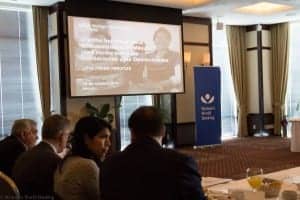 In Latin American microfinance, Mexico stands out as a bit of an outlier: despite having the largest population, and by extension, the largest microfinance market in the region, Mexico has a relatively small overall loan portfolio, especially when compared to much smaller countries like Peru or Colombia. The reason isn’t a mystery to industry watchers—it is due to the continued dominance of group lending, through village banking, the style of lending associated with the early days of microfinance where a group of low-income people act as each other’s guarantor. This continued dominance is another way Mexico is different from its neighbors: many other countries have introduced microenterprise individual lending (IL), a type of lending that is more adaptable to the specific needs of microentrepreneurs, i.e. capital for business growth. If microfinance in other countries, not just in Latin America but also all over world, has expanded to offer individual lending to its low-income entrepreneurs, why hasn’t it happened in Mexico? Surely, low-income Mexican microentrepeneurs have businesses they want to grow as those other countries—why haven’t financial services providers moved to meet this need? This is the real mystery, a mystery that our research team addressed in our recently published report, “Individual Lending to Microenterprises in Mexico: A Survey of Constraints and Opportunities” supported by McGraw-Hill Financial.
In Latin American microfinance, Mexico stands out as a bit of an outlier: despite having the largest population, and by extension, the largest microfinance market in the region, Mexico has a relatively small overall loan portfolio, especially when compared to much smaller countries like Peru or Colombia. The reason isn’t a mystery to industry watchers—it is due to the continued dominance of group lending, through village banking, the style of lending associated with the early days of microfinance where a group of low-income people act as each other’s guarantor. This continued dominance is another way Mexico is different from its neighbors: many other countries have introduced microenterprise individual lending (IL), a type of lending that is more adaptable to the specific needs of microentrepreneurs, i.e. capital for business growth. If microfinance in other countries, not just in Latin America but also all over world, has expanded to offer individual lending to its low-income entrepreneurs, why hasn’t it happened in Mexico? Surely, low-income Mexican microentrepeneurs have businesses they want to grow as those other countries—why haven’t financial services providers moved to meet this need? This is the real mystery, a mystery that our research team addressed in our recently published report, “Individual Lending to Microenterprises in Mexico: A Survey of Constraints and Opportunities” supported by McGraw-Hill Financial.
What our team found was a confluence of circumstances from both the industry-side and the client-side that together explains why microenterprise IL hasn’t taken off in the country. A summary of the findings can be found below.
*For a full explanation of these findings, see the report.
From the industry-side:
- Consumer credit has acted as a substitute for microenterprise lending
- The group lending model has been the dominant model and defined the approach
- Human resources in Mexico pose unique challenges to the growth of microenterprise lending
- Regulation has served as a disincentive to banking institutions in promoting growth of microfinance
From the client-side:
- Clients have low levels of financial literacy
- Lack of appropriate products coupled with low levels of financial literacy have resulted in over-indebtedness
- Clients associate strong feelings of mistrust and fear with financial services in Mexico
Strong as these barriers are to the introduction of microenterprise IL, the microfinance market in Mexico cannot afford to let the status quo remain. As of last count (based on numbers from MIX Market), the market is contracting and there is a consensus among industry players that the market for group lending has limited potential for growth. If the industry is to continue to grow and develop and provide financial services to the low-income entrepreneurs, innovation is needed. Our estimate found that there is an untapped market waiting for something like microenterprise IL: there is a population of approximately 2 to 2.5 million microentrepreneurs who are unserved by microenterprise individual lending (based on their business analysis and repayment capacity). Reaching these individuals with appropriate products would expand the local microfinance market and meet the business needs of microentrepreneurs.

There was largely agreement with the findings presented by Chief Strategy Officer Harsha Rodrigues, gathering nods from the participants which included representatives from financial institutions, credit bureaus, regulators and other industry stakeholders. Many agreed that the market was indeed saturated and were interested in the path forward suggested by Women’s World Banking. Chief Product Development Officer Anna Gincherman then presented our approach to developing a successful microenterprise IL program and the institutional capabilities required to introduce and expand it in the country. Introducing microenterprise IL requires adjustments in product design, marketing and consumer education and in the institution’s operating model.
This type of change “will not be easy,” Anna told the room. “It requires a strong institutional commitment, it will impact all levels of the organization and perhaps most importantly, it will take time.” Nevertheless, there does exist a population that needs something that goes beyond group loans by is not being served by the banks. It is in this gap that the opportunity for microenterprise IL lies… a gap that represents a market opportunity of more than two million microentrepreneurs waiting to be served.
Women’s World Banking believes that in order to serve the low-income market well, particularly women, financial institutions must offer financial products that are designed to fit the unique needs of their market. Women’s World Banking is working with market leader Banco Compartamos to spearhead the introduction of microenterprise IL in the country and we look forward to continuing to serve as a resource to other players in the local industry in order to facilitate the financial inclusion of the country’s microentrepreneurs.




